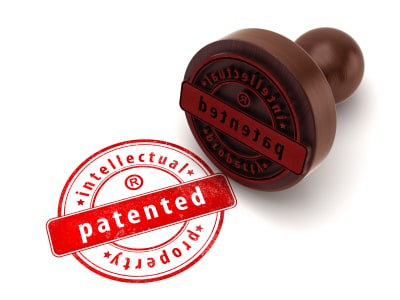 With all the news about patent litigation these days, some have argued that patents are hurting innovation. There have even been suggestions of just eliminating or greatly curtailing patent rights. Such comments are heard particularly loudly when products are pulled from the market due to patent disputes, or when small companies are forced to shut down by larger competitors due to patent lawsuits. Patent trolls that take advantage of the patent system to unfairly extract money from small companies also add to these feelings.
With all the news about patent litigation these days, some have argued that patents are hurting innovation. There have even been suggestions of just eliminating or greatly curtailing patent rights. Such comments are heard particularly loudly when products are pulled from the market due to patent disputes, or when small companies are forced to shut down by larger competitors due to patent lawsuits. Patent trolls that take advantage of the patent system to unfairly extract money from small companies also add to these feelings.
So are patents harmful for innovation?
Modern patent systems are based on the premise of a contract between inventors and society. In exchange for making their innovative work available to the public and allowing society to benefit from their inventions, inventors receive the right to exclude others from practicing that same activity for a limited period of time, normally 20 years.
Such a system rewards inventors for their work, thereby encouraging research activities, since researchers know that they can protect their ideas and recoup their investment in time and money through patent rights. Strong patent systems have been credited with increasing R&D spending. Without patent protection, companies would not invest in R&D activities and in bringing innovative products to the market, knowing that their competitors can copy the products for a fraction of the cost.
Patents also provide financial incentives for universities and research labs to bring their research to the market. According to AUTM, universities, hospitals, and research institutions generated $2.5 billion in overall income from patents they hold in 2011. Such revenues would not have been possible without patents.
Moreover, inventors must fully disclose their invention in order to obtain a patent, to a sufficient level of detail to enable a person trained in that particular field to carry out the invention and build on it. Patents are published and open to the public normally 18 months after being filed with the patent office. With over 8 million published patents just in the United States, this provides a huge resource for researchers to keep building upon these innovative ideas and developing the next invention.
It has been argued that inventors are discouraged from launching companies and developing new products for fear of patent infringement lawsuits by bigger competitors. While this may be true, the risk of patent infringement is just one of many business risks that a company takes when going into business. Companies that possess genuinely innovative technologies can use patents as an insurance policy to protect their IP and their products from being copied by competitors.
By providing incentives to companies and individuals to invest in research and to develop innovative products, a strong patent system becomes central to promoting economic development. In fact, the jobs created through R&D investments in innovative technology are very high value jobs, and each job created in R&D normally results in several other support and service jobs being created.
While there are some negative aspects that are associated with the patent system, such as patent trolls, endless patent litigations, and small companies coming under pressure due to patent infringement, these are best addressed through specific policies that target and minimize them. It is clear, however, that the advantages provided by a strong patent system far outweigh any of the disadvantages that may come with it. In the words of Abraham Lincoln, the patent system added “the fuel of interest to the fire of genius in the discovery and production of new and useful things.”
This post is archived and may contain outdated information.
